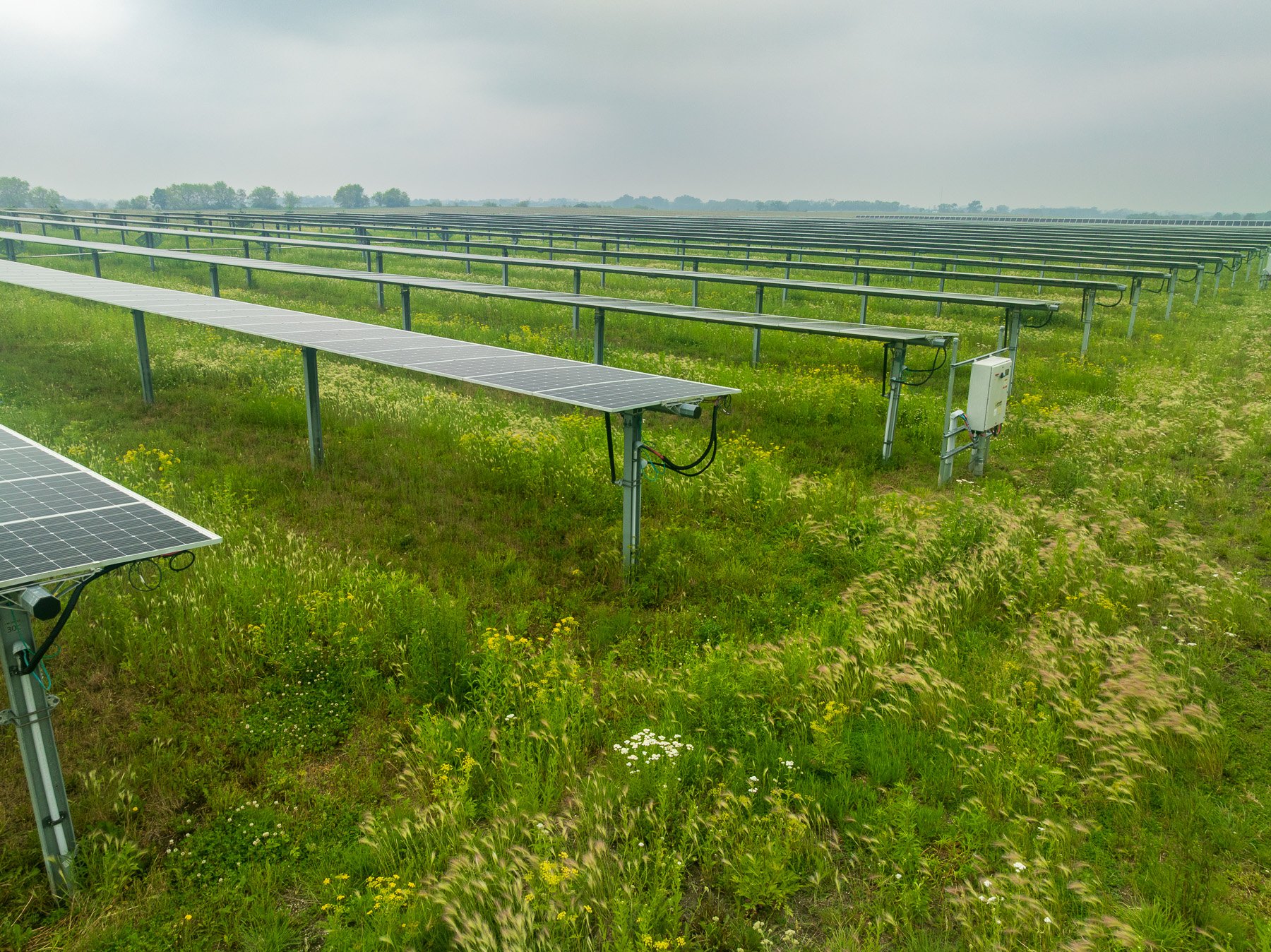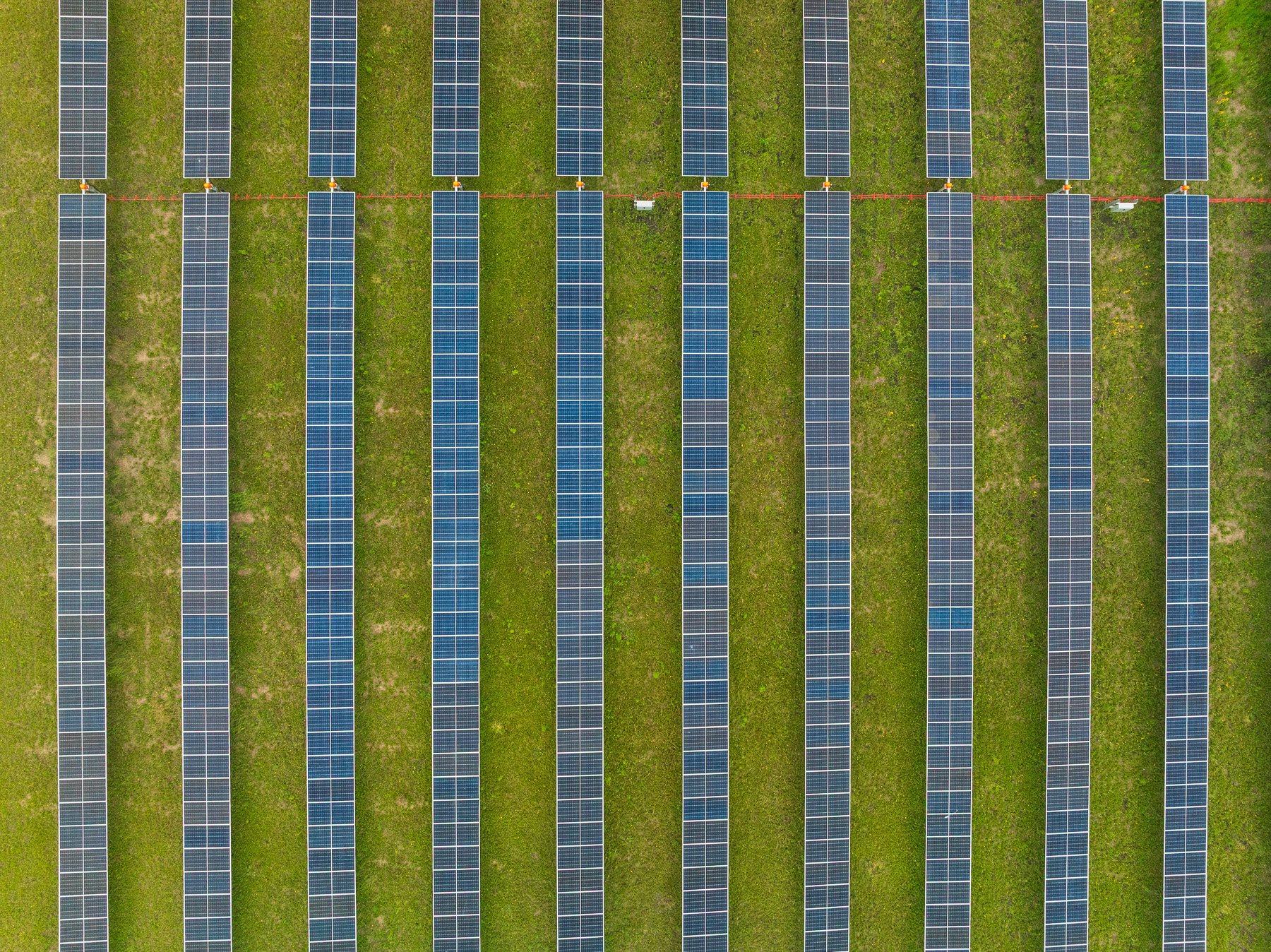Choosing the best plants for solar farms will go a long way in keeping maintenance manageable. This is important because solar farm landscape maintenance can directly impact the efficiency and success of your solar farm.
The vegetation around your solar farm (particularly the grass), can play an essential role in the longevity and performance of your solar farm.
Jump to Section
- What’s the Best Permanent Vegetation to Plant Under Solar Panels?
- What Are the Best Plants for Solar Farm Buffers?
- What Are the Best Low-Maintenance Plants for Solar Farms?
- What's The Best Time of Year to Install Plants for Solar Farms?
- Vegetation Management for Solar Farms
- Choosing Commercial Landscape Design in Greater Chicago
At KD Landscape, we are involved in both the installation and maintenance of vegetation at solar farms. Knowing what to install is essential for your site's long-term performance.
In this article, we’ll share some of our knowledge on what to plant and how it will impact your goals.
What’s the Best Permanent Vegetation to Plant Under Solar Panels?
Most often, grass is used for solar farms, so seeding with an appropriate grass type is required. This is all very site-specific, with it being imperative that we follow local solar farm planting requirements.
Often, the local county or ownership group decides what the seed should be. This might be a pollinator mix, prairie mix, or something else. It’s all dependent on what they’re looking to achieve. It might be a grazing mix if it’s determined that animals will be part of the vegetation management plan (like grazing sheep or goats).
Mesic mixes are also popular for solar farms. This is a native seed blend designed for mesic soils (neither overly wet nor overly dry). A mesic mix contains a combination of native grasses and is typically a good choice for creating natural habitats. Mesic mixes tend to be low-maintenance.
Ideally, choose a low-growing, drought-tolerant grass type that helps control erosion and mitigate dust.
What Are the Best Plants for Solar Farm Buffers?
In addition to the plants installed around the panels, plant buffers are usually installed within the solar farm to screen it from residential areas or street views. This is often necessary in densely populated areas (and is unlikely to be an issue for solar farms in remote areas).

The best plants for solar farm screening are usually those that grow thick and/or dense, forming a good screen. These include many evergreen varieties, such as arborvitae and viburnum.
What Are the Best Low-Maintenance Plants for Solar Farms?
When discussing seeding for solar farms, anything that does not require mowing is considered low-maintenance. While low-profile or robotic mowers can mow grass at solar farms, this will require higher maintenance.
A low-growing grass type that can be weed-whacked (or grazed by animals) is therefore a good choice. A Mesic mix is a low-maintenance grass mix that can work well for solar farms.
As for screening plants around your solar farm, evergreens tend to be lower-maintenance. They provide year-round greenery and screening with minimal upkeep.
What's The Best Time of Year to Install Plants for Solar Farms?
The best time to seed a solar farm is before construction, as this allows you to establish vegetation before the site is disturbed during panel installation.
Pre-construction is also the easiest time to access the entire land.

But it is still possible to hydroseed or seed the ground, even after panels have been installed.
As for plant buffers used for screening, they can be installed after the panels are in place.
Vegetation Management for Solar Farms
No matter what you plant, vegetation management will be involved. You can’t just let vegetation grow unchecked, or it will negatively impact your solar farm.
Solar farms are not high-maintenance, but they’re not “zero maintenance,” either. They fall somewhere in the low-to-moderate-maintenance range, depending heavily on the design, vegetation strategy, equipment used, and location.
We find that solar farms tend to involve more maintenance than people generally realize. As with anything, it’s important to have realistic expectations.
Vegetation around solar farms, including the turf, can grow fast. And when there is overgrowth, it can lead to problems.
Poor turf maintenance at solar farms can lead to operational, environmental, and financial issues. That’s why it’s essential to keep up with ongoing care.
Fortunately, by making wise plant choices, you can reduce the maintenance burden of your solar farm.
Choosing Commercial Landscape Design in Greater Chicago
When it comes to maximizing the efficiency and performance of your solar farm, you want a landscape maintenance partner you can trust to help you make the best decisions.
That means choosing a commercial landscaper who can assist with everything from the best plants for solar farm installation to vegetation management down the road.

At KD Landscape, we have extensive experience managing large-scale commercial landscapes like solar farms. Our expert understanding of efficient planning and execution of large projects ensures optimal installation decisions and effective vegetation management around solar panels.
We are also committed to promoting sustainability with eco-friendly practices. Our innovative solar farm vegetation management strategies ensure you stay within budget and receive the necessary maintenance to achieve your performance goals.
When you make a wise choice and maintain your solar farm grounds properly, you can avoid problems and ensure optimal solar farm efficiency.
Want to learn more about commercial landscape design and maintenance in Greater Chicago? Get started today with an on-site consultation. We’ll review your options together so you can make a great choice.





